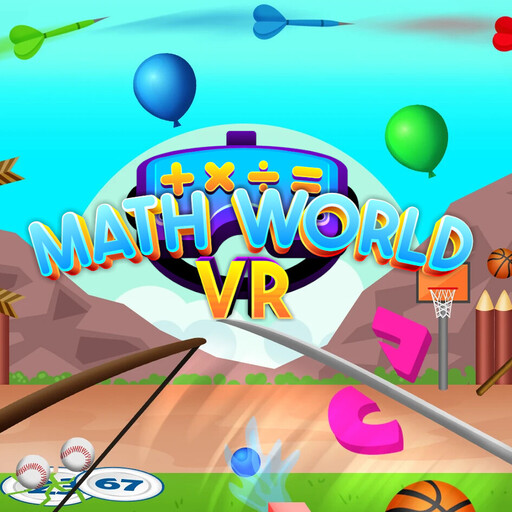In today’s rapidly evolving world, STEM (Science, Technology, Engineering, and Mathematics) has become a cornerstone of modern education. But when we talk about STEM, the conversation often revolves around mainstream education. What’s less discussed, but equally important, is the role of STEM in special education. Integrating STEM into special education can offer numerous benefits, from enhancing cognitive skills to providing hands-on learning experiences. Let’s delve into how STEM can be a game-changer for special education.
1. Personalized Learning Experiences For Special Education
Every student in special education has unique needs and learning styles. STEM, with its practical and exploratory nature, can be tailored to fit each student’s requirements. For instance, a child with a physical disability might find it challenging to write or draw. However, using technology, they can design 3D models or program robots, turning a potential obstacle into an engaging learning experience.
2. Enhancing Cognitive Skills
STEM activities often involve problem-solving, logical reasoning, and critical thinking. For students with cognitive challenges, these activities can be therapeutic. They can help improve memory, attention span, and other cognitive functions. Simple engineering tasks, like building a bridge with blocks or programming a basic robot, can stimulate the brain in ways traditional teaching methods might not.
3. Hands-on Learning With STEM
Many special education students benefit from tactile learning experiences. STEM, especially the engineering and science components, is inherently hands-on. Whether it’s dissecting a flower to understand its parts or constructing a simple circuit, the tangible nature of these activities can make abstract concepts more accessible and memorable.
Visual and Experiential Learning: STEM subjects, particularly science and engineering, are rooted in visual and experiential learning. For students with learning disabilities or attention disorders, traditional text-based learning can be challenging. STEM activities, with their emphasis on experiments, visual models, and interactive tasks, can cater to these students by offering alternative ways to grasp complex concepts.
4. Boosting Confidence and Independence
Success in STEM activities can provide a significant confidence boost. Completing a science experiment or building a working model can give students a sense of accomplishment. This success can translate into increased self-esteem and a belief in their abilities, fostering a more independent learning attitude.
5. Preparing for the Future
The world is becoming increasingly reliant on technology and STEM-related jobs are on the rise. By introducing special education students to STEM, we’re giving them tools and skills that can be beneficial in the future. Whether or not they pursue a STEM career, the analytical and problem-solving skills they gain will serve them in many life scenarios.
Building on Inherent Strengths: Many special education students possess innate skills and talents that align perfectly with STEM fields. For instance, some students on the autism spectrum may have heightened abilities in pattern recognition, a skill crucial in coding and mathematics. By introducing them to STEM, we’re not just teaching new subjects but also recognizing and nurturing their inherent strengths.
6. Incorporating Assistive Technologies
Technology is a significant component of STEM, and it plays a crucial role in special education. Assistive technologies, like speech-to-text software or screen readers, can make learning more accessible for students with disabilities. By integrating these tools into STEM activities, students can engage with the material in ways that cater to their individual needs.
Adaptive Learning Tools: Technology, a key component of STEM, brings forth a plethora of adaptive learning tools specifically designed for students with disabilities. From screen readers for the visually impaired to voice recognition software for those with motor challenges, STEM provides the tools to customize learning experiences based on individual needs.
7. Encouraging Collaboration
STEM projects often emphasize collaboration and teamwork. In a mixed classroom with both mainstream and special education students, STEM projects can serve as a platform for peer learning and mutual understanding. Such collaborative efforts can break down barriers, fostering a more inclusive and empathetic classroom environment.
Integrating Real-World Applications in Special Education through STEM
One of the most compelling aspects of STEM is its direct connection to the world around us. For special education students, this real-world relevance can be particularly transformative, bridging the gap between classroom learning and everyday life.
Contextual Learning: STEM inherently revolves around real-world problems and solutions. For instance, understanding the science behind weather patterns can lead to discussions about climate change and its impact on our planet. For special education students, this contextual approach can make abstract concepts more tangible. When they see the direct implications of what they’re learning, it can enhance comprehension and retention.
Life Skills Development: Beyond the academic benefits, STEM offers practical life skills. For example, basic mathematical concepts can be taught through budgeting exercises or planning a grocery shopping list, helping students navigate real-life situations. Similarly, understanding the basics of technology can empower students to use smartphones, computers, and other devices more effectively and safely.
Environmental Awareness: STEM activities, especially those related to science, can foster a deeper appreciation for nature and the environment. Special education students can engage in projects like planting gardens, studying local ecosystems, or even exploring renewable energy sources. Such hands-on experiences can instill a sense of responsibility and a deeper connection to the world they inhabit.
Problem-Solving in Everyday Scenarios: Engineering challenges in STEM can mimic everyday problems, such as designing a ramp for wheelchair access or creating a device to help with simple tasks. By working on these projects, special education students can develop problem-solving skills that they can apply in their daily lives.
Conclusion
Incorporating STEM into special education is not just about keeping up with educational trends. It’s about providing all students, regardless of their abilities, with the best possible learning experiences. STEM offers hands-on, engaging, and personalized learning opportunities that can cater to the unique needs of special education students. By embracing STEM, educators can ensure that these students are not left behind but are instead equipped with the skills and confidence to thrive in the 21st century.








